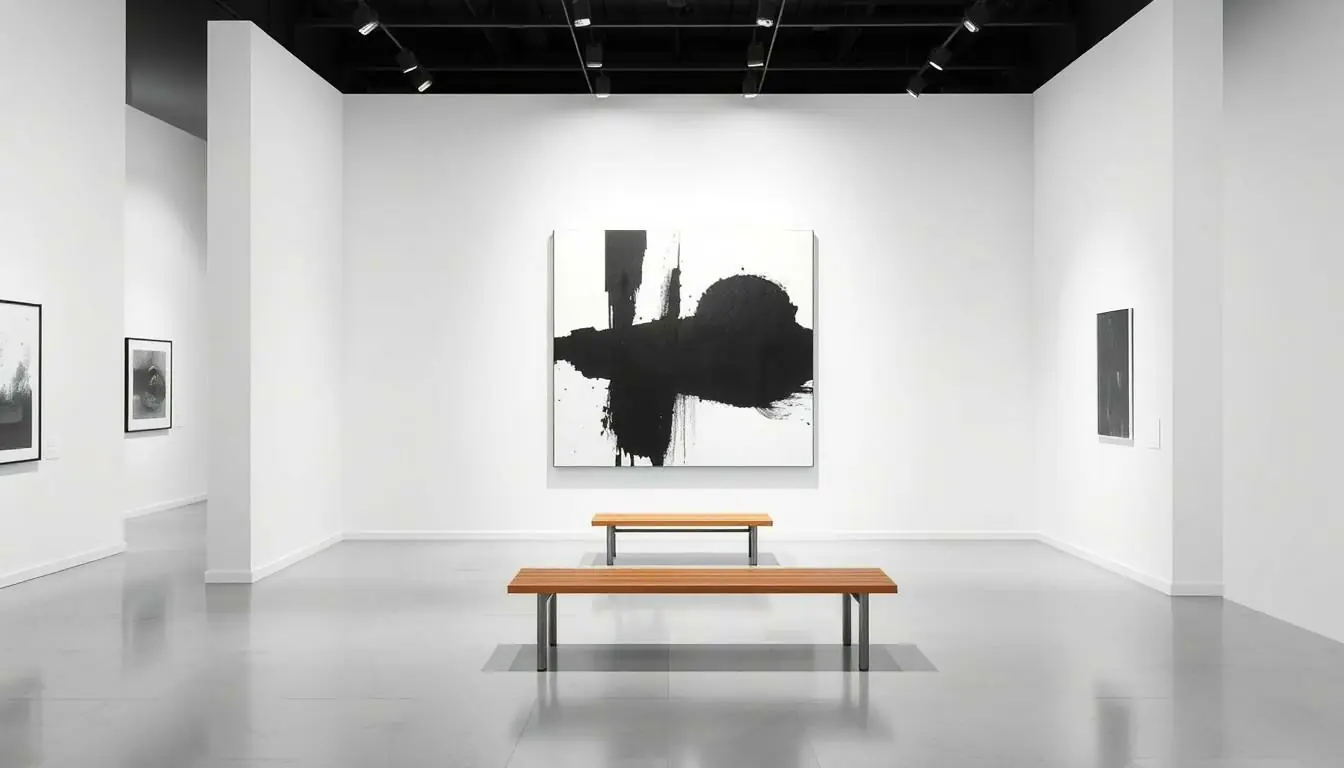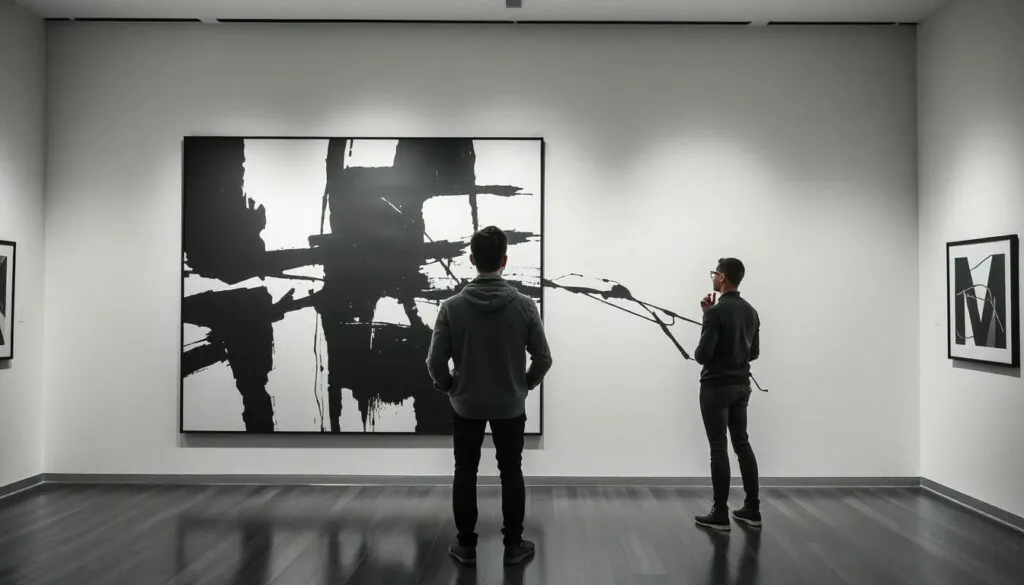Table of Contents
ToggleIn a world bursting with color, black and white modern art stands out like a tuxedo at a beach party. It’s bold, striking, and unapologetically sophisticated. This minimalist approach invites viewers to strip away distractions and dive into the essence of form, texture, and emotion. Who knew that two colors could spark such vibrant conversations?
Overview of Black and White Modern Art
Black and white modern art captures attention through its striking simplicity. Artists often use these two colors to create dynamic contrasts, emphasizing the interplay of light and shadow. By removing color, this art form encourages viewers to engage with the fundamental aspects of a piece, including shape and composition.
Artworks in this genre showcase diverse techniques, from bold brush strokes to intricate line work. Many artists explore themes such as duality, tension, and harmony within their pieces. The absence of color encourages a focus on emotional depth, prompting viewers to interpret meaning through personal experience.
Exhibitions featuring black and white modern art often spark discussion and contemplation. In galleries, simplicity stands out, allowing elements like texture and form to take center stage. Noteworthy artists, including Kazimir Malevich and Yves Klein, have left a lasting impact on this movement, influencing countless creators today.
Black and white modern art has also found a place in contemporary design. Furniture, fashion, and interior decor frequently draw inspiration from its clean lines and minimalist aesthetics. This art form resonates with those who appreciate elegance and the power of subtlety.
Many collectors actively seek black and white pieces for their ability to complement various settings. In homes or public spaces, these artworks often provoke conversations, making them ideal for both personal enjoyment and social engagement. Through their boldness and sophistication, black and white modern artworks continue to leave an indelible mark on the art world.
Key Characteristics

Black and white modern art features distinct qualities that contribute to its remarkable presence. Its minimalist approach and dynamic contrasts stand out, facilitating a deeper appreciation of fundamental artistic elements.
Minimalism and Simplicity
Minimalism defines this genre as artists strip away unnecessary features to focus on essential forms. Artworks emphasize clean lines and shapes, inviting viewers to connect with the piece on a more profound level. Simplicity allows the audience to engage fully with texture and composition. This design philosophy encourages clarity in expression, which resonates across various mediums. Artists like Donald Judd and Dan Flavin exemplify these techniques, creating powerful visual statements without distracting colors.
Contrast and Duality
Contrast serves as a cornerstone in black and white modern art, enhancing the visual impact of each piece. This stark differentiation creates an interplay between light and shadow, emphasizing dynamic movement within the artwork. Duality emerges as a significant theme, representing opposing concepts such as tranquility versus chaos or presence versus absence. These elements evoke emotional responses, inviting reflection on various interpretations. Artists utilize contrasting aspects to challenge perceptions, ultimately engaging viewers in a dialogue about their feelings and experiences.
Prominent Artists in the Black and White Modern Art Scene
Several artists stand out in the realm of black and white modern art, showcasing unique styles that define this genre.
Artist One: Biography and Style
Kazimir Malevich emerged as a pivotal figure in black and white modern art. Born in 1879 in Ukraine, he embraced abstraction, using geometric shapes to express complex ideas. Malevich’s iconic work, “Black Square,” challenged traditional perspectives on representation and perception. By stripping away color, he emphasized form and spatial relationships. His Suprematist movement focused on visual perception’s essence, allowing viewers to engage with pure shapes. With bold compositions and stark contrasts, Malevich crafted an expressive dialogue between the viewer and the artwork.
Artist Two: Influences and Contributions
Yves Klein played a significant role in shaping modern art through his innovative approaches. Known for his monochromatic paintings, he extended the boundaries of black and white art by incorporating textures and diverse materials. Klein’s fascination with spirituality influenced his creations, as he sought to convey emotions through simplified forms. By introducing the use of fire and other unconventional methods, he challenged traditional artistic practices. Additionally, Klein’s work in performance art highlighted his commitment to exploring the essence of creativity. His impactful contributions paved the way for future artists striving to redefine artistic expression.
Significance in Contemporary Art
Black and white modern art holds a vital place in today’s artistic landscape. This genre not only emphasizes simplicity but also provokes thought and discussion on deeper themes.
Cultural Impact
Cultural influence manifests through diverse expressions in black and white art. This art form transcends traditional boundaries, appearing in movements like Minimalism and Abstract Expressionism. Artists like Kazimir Malevich and Donald Judd redefine norms by focusing on foundational principles. Collections featuring this art often draw interest globally, illustrating a widespread appreciation for its elegance. Black and white art also extends into fashion and interior design, reflecting a modern aesthetic that resonates with different cultures.
Emotional Resonance
Emotional depth defines many works in black and white modern art. This technique strips away colors, encouraging viewers to engage with emotions tied to shapes and lines. The interplay of light and shadow invites reflection, enhancing connections between the artwork and the observer. Artists frequently explore themes such as duality and tension, evoking various responses. Pieces provoke contemplation and discussion, resulting in rich interaction with the audience. Every encounter with black and white art can lead to unique interpretations, solidifying its lasting significance in contemporary culture.
Black and white modern art stands as a testament to the power of simplicity and contrast. Its ability to evoke deep emotional responses while engaging viewers in meaningful dialogue is unparalleled. Artists in this genre challenge perceptions and encourage exploration of fundamental elements, from shape to texture.
The impact of this art form extends beyond galleries and into various aspects of contemporary life, influencing design and aesthetics. Collectors and enthusiasts alike appreciate its versatility and elegance, making it a sought-after addition to any collection.
Ultimately, black and white modern art continues to inspire and provoke thought, ensuring its relevance in today’s artistic landscape. Each piece invites viewers to embark on a journey of reflection and interpretation, solidifying its place in the hearts and minds of art lovers everywhere.






